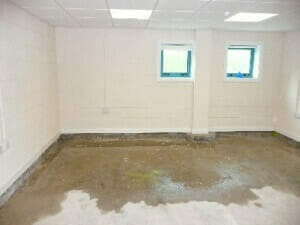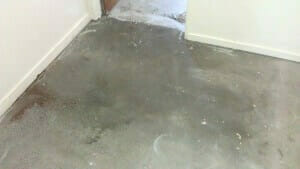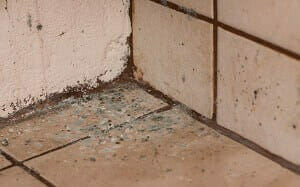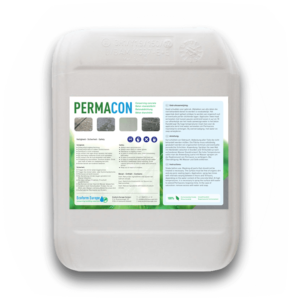Stop rising damp permanently DIY
Rising damp or moisture in your home, cottage, apartment or cabin, is a problem sometimes visible only after several years, but can cause major problems and necessary repairs. Fortunately, you can avoid the problem and take measures to prevent moisture from being drawn up into your house and other buildings.
What is rising damp?

If you put a dry sponge on a damp surface, you will see how the sponge gets damp. The water from the soil is sucked into the sponge. This is exactly what we expect from a sponge. Unfortunately, a house or building on / in moist soil does the same: the moisture of the soil is sucked into the structure. This is called rising damp.
Rising damp occurs frequently in older buildings, but it is certainly advisable to look for moisture issues in modern constructions with, for example a concrete foundation, as well. In older buildings, the foundations are often mortared and no dense layers are applied to prevent rising damp. The stones and bricks are then directly or indirectly in contact with the groundwater, surface water or other moisture. By absorption, or so-called capillary action, the moisture is sucked in by the building materials. Rising damp is actually absorbed moisture. The way this happens is comparable with how a big tree manages to get the nutrients from the roots, to the leaves and twigs, in the treetop. With this much force, moisture can also be sucked up by your home or shed.
To which degree a building is sensitive to rising moisture, depends not only on the construction or the materials used. Also, the general humidity, the temperature, the possibility of evaporation, and isolation of, for example, crawl spaces play a role. Even the presence of salts in the building materials and changes in groundwater levels influence rising damp problems.
This automatically means a moisture problem can also develop later. If there are initially no moisture problems, a change in the environment can still cause problems with rising damp. You can think of changes in the sewer, your garden – or even the neighbors – that is reconstructed with another drainage channel as a result of a new extension to the house.

You can notice it when construction materials of the house absorb moisture. Of course, wet spots, which are not the result of a leakage but are caused by rising damp from the soil, can arise. There may be mold and mildew growing, and it can even affect furniture, there may be a musty smell and paint, plaster layers, wallpaper and other furnishings can come off.
But in fact, these issues are only symptoms of the problem. More serious is the building materials and construction could ultimately be irreparably damaged. Not only directly because of the degradation of building materials by the moisture, but also due to algae and fungi which are fed by the moisture and affect timber structures and other load-bearing components.
Prevent rising damp
Obviously, you want to prevent moisture from damaging your house, shed or cabin. The best prevention however, starts at the construction of the building itself, where many measures can be taken to prevent groundwater and other fluids to cause problems. Of course it is also important to understand the water management in and around the building. Issues, such as the drainage of rainwater, possible leaks, and any changes in the groundwater, are worth knowing about.
Additionally, you can prevent damage in existing buildings by using tools that will make your building watertight, and prevent moisture from penetrating through these materials.

For example, use Permacon. This product makes foundations and other structures completely waterproof and stops rising moisture. It is great for treating rising damp problems. At the same time Permacon prevents decay and stops fungi and algae from growing. The product can be used on all types of old and new concrete, brick, stone, limestone, gypsum and terracotta. It can also be used for pavements and walls.
Permacon is environmentally friendly and is a permanent solution to rising damp issues. The liquid is colorless, based on water, and is ideal for do-it-yourselfers. For larger jobs, you can use an ordinary low pressure spray like you use in the garden. For smaller surfaces and applications you can use a brush.
Rising damp is a problem with a solution
Moisture problems in houses and other buildings, are part of our climate. If we don’t do anything to prevent this, these problems can cause damage to the house and furniture. Fortunately, you can easily prevent moisture damage with Permacon. Permacon waterproofs concrete and stone, and prevents rising damps. Permacon is environmentally friendly, easy to apply and protects your home, cottage or shed against moisture absorption.

Permacon
- Very economical: 1 liter is sufficient for 44 ft2.
- Available in 1 / 2,5 / 5 / 10 / 25 Liter.